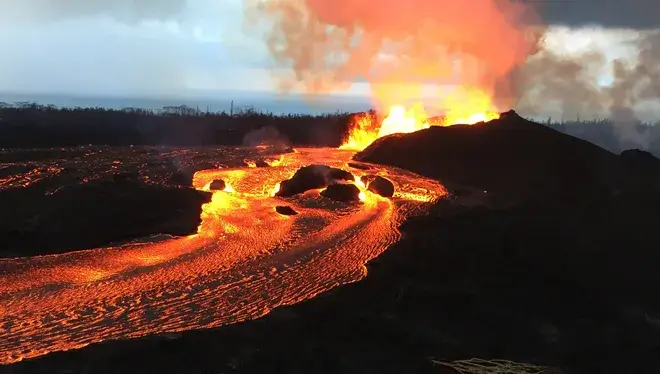Kilauea volcano has erupted again, putting on a dynamic show at Halemaumau Crater. This Kilauea Volcano eruption is the fifth since 2020. The eruption began around 2:30 a.m. Monday. Lava fountains reached heights of up to 262 feet.
USGS Hawaiian Volcano Observatory detected elevated seismic activity just 30 minutes before the eruption. Vents are continuing to erupt on the floor of the southwest part of the summit caldera. The plume of volcanic gas and fine volcanic particles is reaching elevations of 6,000-8,000 feet above sea level.
Ken Hon, USGS HVO Head Scientist, said the lava flows have already covered the old lake that began in 2020. The primary hazard of concern is high levels of volcanic gas. So, the residents are advised to remain vigilant and minimize exposure to volcanic ashfall.
The National Weather Service issued a special weather statement, warning of very light ashfall near the volcano. In addition, scientists are closely monitoring the situation. They are working to determine the cause of the eruption and potential hazards.
The eruption has also raised concerns about air quality. Furthermore, the Hawaii Department of Health has issued guidelines for residents to minimize exposure to volcanic ash.
Residents are advised to keep windows and doors closed and to use air purifiers to minimize exposure to volcanic particles. Additionally, residents are advised to avoid outdoor activities, especially those with pre-existing respiratory conditions.
The Kilauea Volcano eruption is a significant event. Scientists are closely monitoring the Kilauea volcano eruption.
This news story was originally published by Alaska’s News Source.









